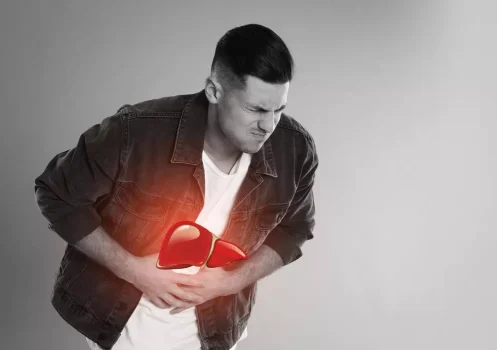
Therefore, before putting drivers under the influence of alcohol behind the wheel in AVs, it is crucial to understand alcohol’s effects on drivers’ manual driving and automated driving takeover performance (e.g., response time to TOR, speed, and lane position control after resuming manual control). To date, no systematic review synthesizes the literature on how alcohol may impact drivers’ driving (takeover) abilities and performance. Therefore, the goal of this study was to perform a systematic review of alcohol effects on both manual and automated (takeover) driving performance and provide recommendations for improving the design of future vehicles. Drivers with BACs of .08 g/dL or higher involved in fatal crashes were 4 times more likely to have prior convictions for driving while impaired than were drivers with no alcohol (6% and 2%, respectively). In fact, in many states with AI/AN reservations, tribal law enforcement officers do not have the authority to stop a driver suspected of being impaired once the suspect crosses the border, leaving their jurisdiction.
Blood Alcohol Concentration (BAC) Levels & Driving Effects

For instance, they may slam on the brakes when a hazard appears in the roadway, rather than simply steering around it. Always remember that the only “safe driving decision” you can make when you have consumed alcohol, is not to drive at all. Scientists have linked frequent alcohol use to depression, anxiety, mood disorders, and self-harm (e.g., suicide attempts and cutting).
- A person’s alcohol level is measured by the weight of the alcohol in a certain volume of blood.
- A crucial force in shaping the environments in which people make their decisions about drinking, which in turn affect their likelihood of drinking and driving, is the alcohol industry itself.
- It’s vital to understand that being under the legal limit (BAC of 0.08%) does not necessarily mean an individual is safe to drive.
What does it mean to be driving in rage?

Such limitations are especially problematic for this population, since AI/ANs are at high risk for driving while impaired and sustaining injuries or fatalities from an alcohol-related crash (Letourneau and Crump, 2016). Additional differences in policies and laws will be discussed throughout the report as they apply to various interventions for alcohol-impaired driving. Stimulant drugs, such as caffeine, amphetamines and cocaine, may increase alertness, but this does not mean they improve driving skills. The tired driver who drinks coffee to stay awake on the road should be aware that the stimulant effect can wear off suddenly, and that the only remedy for fatigue is to pull off the road and sleep. Amphetamines do not seem to affect driving skills when taken at medical doses, but they do make some people overconfident, which can lead to risky driving.
New York DWI Defined
The 2007 National Roadside Survey results revealed that drivers with positive BAC levels were most likely to be driving short distances (5 miles or less) and coming from a restaurant, club, tavern, or bar (Kelley-Baker et al., 2013). This is consistent with other research findings, which suggest that almost half of people arrested for alcohol-impaired driving are coming from a licensed establishment (Fell et al., 2010; Gallup, 2000; O’Donnell, 1985). See Chapter 6 for information on the importance of data on place of last drink. While nationwide the number of alcohol-impaired driving fatalities increased from 2015 to 2016, a closer examination at the state level paints a more complex picture. Seventeen states and Puerto Rico saw reductions in alcohol-impaired driving fatalities, with Wyoming experiencing the largest decrease (40.7 percent). However, 29 states and the District of Columbia observed increases in fatalities, with the largest increase being in Vermont (80.0 percent) (NCSA, 2017a).
- While this trend seems to reflect the positive effect of increased public awareness and stricter laws, drinking and driving continues be a major cause of injury and death.
- NY will suspend your license, impose expensive fines, and even put you in jail if you drink and drive.
- The decline was greatest for drivers with lower BACs (0.005 to 0.049 percent).
- Throughout your driving life, you must continually recall and execute safe driving strategies to make every trip you take as risk-free as possible.
- Alcohol makes it harder for the brain areas controlling balance, memory, speech, and judgment to do their jobs, resulting in a higher likelihood of injuries and other negative outcomes.
Reaction time
Young drivers’ perceptions about how much they can drink and still drive safely also increase their risk. Among 16- to 20-year-olds, the average BAC at which these drivers considered themselves safe to drive was 0.12 percent for males and 0.07 percent for females (based on respondents’ estimates of how much they could drink in a 2-hour period and still drive safely). In comparison, a 0.05-percent BAC was considered safe by males and females ages 21 to 45, and a 0.03-percent BAC was believed safe by those age 45 and older. A meta-analysis (Wells-Parker et al. 1995) of 215 independent evaluations of mandated treatment of convicted drinking and driving offenders revealed that treatment reduces the incidence of repeat offenses up to 9 percent more than standard sanctions such as license suspensions, revocations, or fines. The average recidivism rate among those who did not receive treatment was 19 percent over a 2-year period. Treatment strategies that combined punishment, education, and therapy with followup monitoring and aftercare were more effective than any single approach for first-time and repeat offenders (Wells-Parker et al. 1995).

We will continue until there are zero drunk-driving crashes on our roadways. Know that alcohol steadily decreases a person’s ability to drive a motor vehicle safely. Innovation in vehicle safety technology is rapidly expanding, with a range of technologies recently emerging that provide lane departure warnings, forward collision warnings, side view assists, adaptive cruise control, and many other features. Many hold promise to improve vehicle and road safety, although most are currently marketed https://ecosoberhouse.com/ not as safety features but as driver-assistance systems. Advanced vehicle technology in the form of the Driver Alcohol Detection System for Safety and autonomous vehicles are also in development (see Chapter 4 for more information). In addition to the alcohol environment, the driving environment includes equally important considerations for changing drinking and driving behaviors and for increasing the effectiveness of policies and interventions to reduce alcohol-impaired driving.
- The only way to completely eliminate the risk of these events occurring is not to drive at all.
- One provision specifies that advertisements should not be directed at audiences in which 28.4 percent or more of the audience is under 21 years of age (FTC, 2013).
- Driving with a blood alcohol concentration (BAC) of 0.08 grams of alcohol per deciliter (g/dL) or higher is illegal in all parts of the country.
- If you choose to drink, consider public transport, rideshare, or organising a friend to be designated driver.
Effectiveness of signs for pedestrian-railroad crossings: Colors, shapes, and messaging strategies
Fatally injured drivers with BACs of 0.15 percent or higher, relative to zero-BAC drivers, were much more likely to have been classified by informants as “problem drinkers” (31 percent vs. 1 percent). Finally, fatally injured drivers with BACs of 0.15 percent or higher were much more likely than those with no BAC to be driving from bars (26 percent vs. 0 percent) or from restaurants or other people’s homes (34 percent vs. 22 percent). In 2022, among children (14 and younger) killed in motor vehicle crashes, 25% were killed in drunk-driving crashes. Of those deaths, more than half the time (57%) the child killed was in the vehicle driven by the drunk driver. Additionally, significant growth of suburban areas in recent years has contributed to several changes in the physical driving environment.

You may think you have enough space to pass a tree overhanging the road, only to find you collide with its branches. Driving requires continuous attentiveness to dozens of different tasks, like scanning the roadway ahead, checking your mirrors, monitoring your speed, signaling, shifting gears and managing the space around your vehicle, each of which are vital to your safety. Alternating your focus between these actions can be a serious mental strain, even when you’re sober!
- An effective road safety transport policy should be in place to address drink–driving, together with road safety measures to reduce the severity and risk of drink–driving crashes.
- Because of the way alcohol distributes itself throughout body fluids, it is possible to measure a person’s alcohol level by testing the urine, saliva, or water vapor in the breath, as well as by testing the blood.
- Many states require offenders to install ignition interlock devices at the driver’s own expense.
- Policies and interventions to reduce alcohol-impaired driving, crashes, and fatalities are discussed in detail in Chapters 3, 4, and 5.
In cases of alcohol-related traffic fatalities, however, blood testing must be used to estimate alcohol levels. With the advancement of technology and growing public interest in autonomous vehicles (AVs), it is imperative to consequences of drinking and driving observe how the current understanding of drivers under the influence of alcohol may or may not transfer to AV use. AVs are categorized from Level 0, no automation, to Level 5, fully autonomous (SAE International, 2021).
In 2012 the BRFSS results showed that the Midwest U.S. Census region had the highest annual alcohol-impaired driving rate at 573 per 1,000 people (Jewett et al., 2015). A recent analysis of FARS data showed that the majority of deaths from alcohol-impaired driving crashes from 2000 to 2013 occurred in the South (45.6 percent), followed by the West (21.9 percent) and the Midwest (21.0 percent) (Hadland et al., 2017). Of all drivers involved in fatal crashes in 2015, 21 percent of men and 14 percent of women had a BAC of 0.08% or higher (NCSA, 2016a). While this disparity has held constant for decades, there is limited research suggesting that female drivers are becoming increasingly involved in alcohol-impaired driving crashes (Vaca et al., 2014).